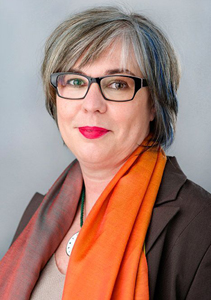
Andrea Peto
Through her research, writing and teaching, Andrea Peto is introducing her students and colleagues at Central European University to the many scholarly applications of the Visual History Archive.
Peto’s research interests are oral history and women’s history, and she has authored books on women’s employment in 1950s, women’s associations 1945-1951, a biography of Julia Rajk and the female perpetrators in Hungary during World War II.
Peto said she first discovered the Visual History Archive while looking for easily accessible video testimonies to use in her teaching about oral history and qualitative methods.
"I was fascinated by how digital access has transformed witnessing and testimonies,” Peto said.
At Central European University (CEU) Peto is co-teaching a seminar course called Gendered Memory of the Holocaust, based on the Visual History Archive and IWitness. She developed the course as a USC Shoah Foundation Teaching Fellow in summer 2013. Students watch testimony in the VHA and create their own videos in IWitness on topics relating to gender and memory construction of the Holocaust.
The course is partnered with another class of students at Smith College in Massachusetts. Several class periods are conducted via video conference, so the students at CEU and Smith can interact and hold discussions together.
At CEU’s conference Hungarian Holocaust 70 Years Later earlier this month, Andrea Peto presented her research from the Visual History Archive about memory of Holocaust survivors of the World War II legal process in Hungary, “Digitalized Memories of the Holocaust in Hungary in the Visual History Archive Collection.”
For her paper about the Hungarian legal process after World War II, she focused on the methodological problems of using video testimonies for historical research. The paper summarized the tendencies that inform the construction of World War II memory in the legalist framework based on documents produced by the people's tribunals in Hungary.
“Those who were interviewed for the Visual History Archive collection were very young during the trials, so they did not serve as witnesses but they were participating in the trials in the audience,” Peto said. “Therefore the narratives consist of a touch of youth romantic: how did they sneak in the trial, et cetera, which creates a very specific memory culture previously ignored by researchers.”
Watch a video about the Gendered Memory of the Holocaust course at CEU: